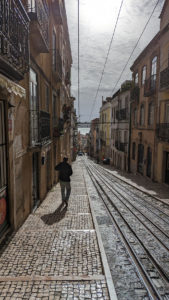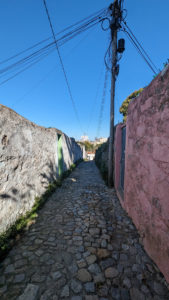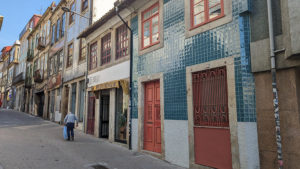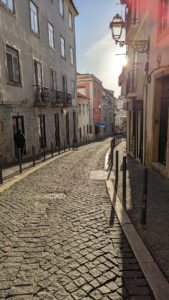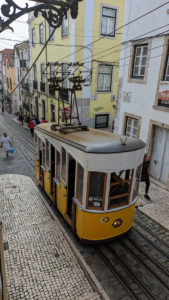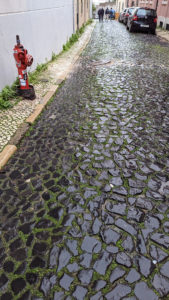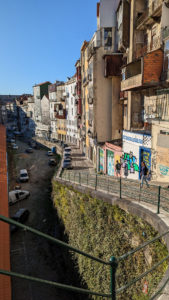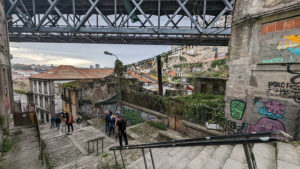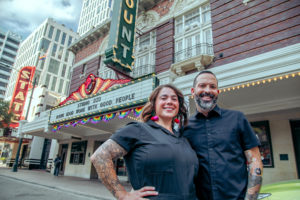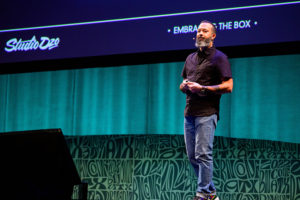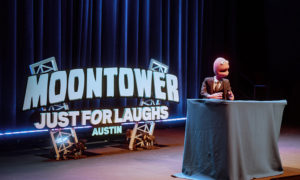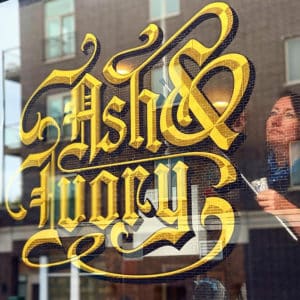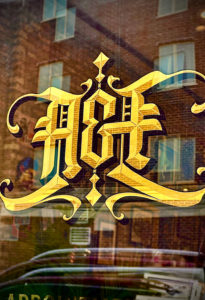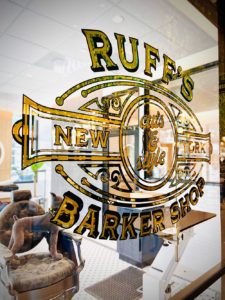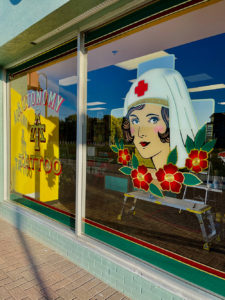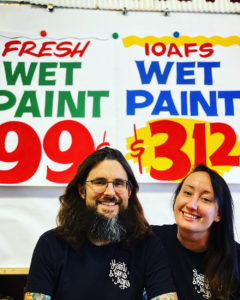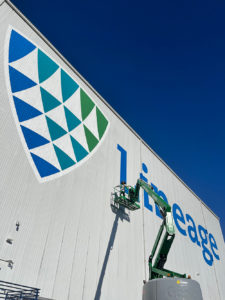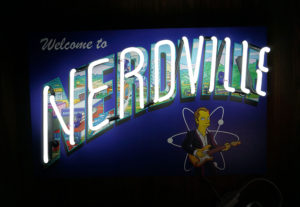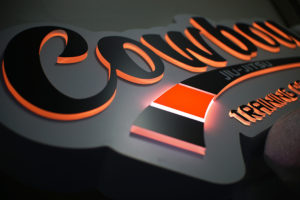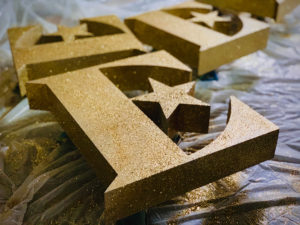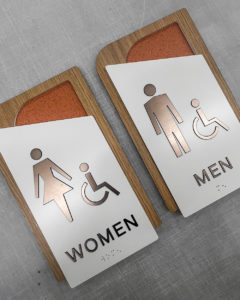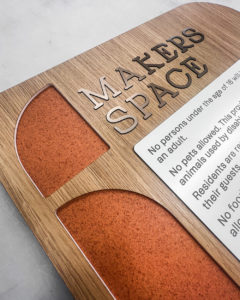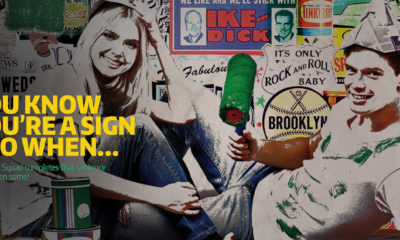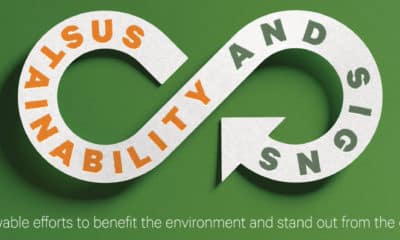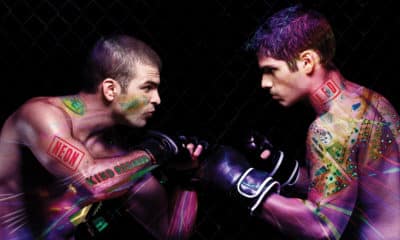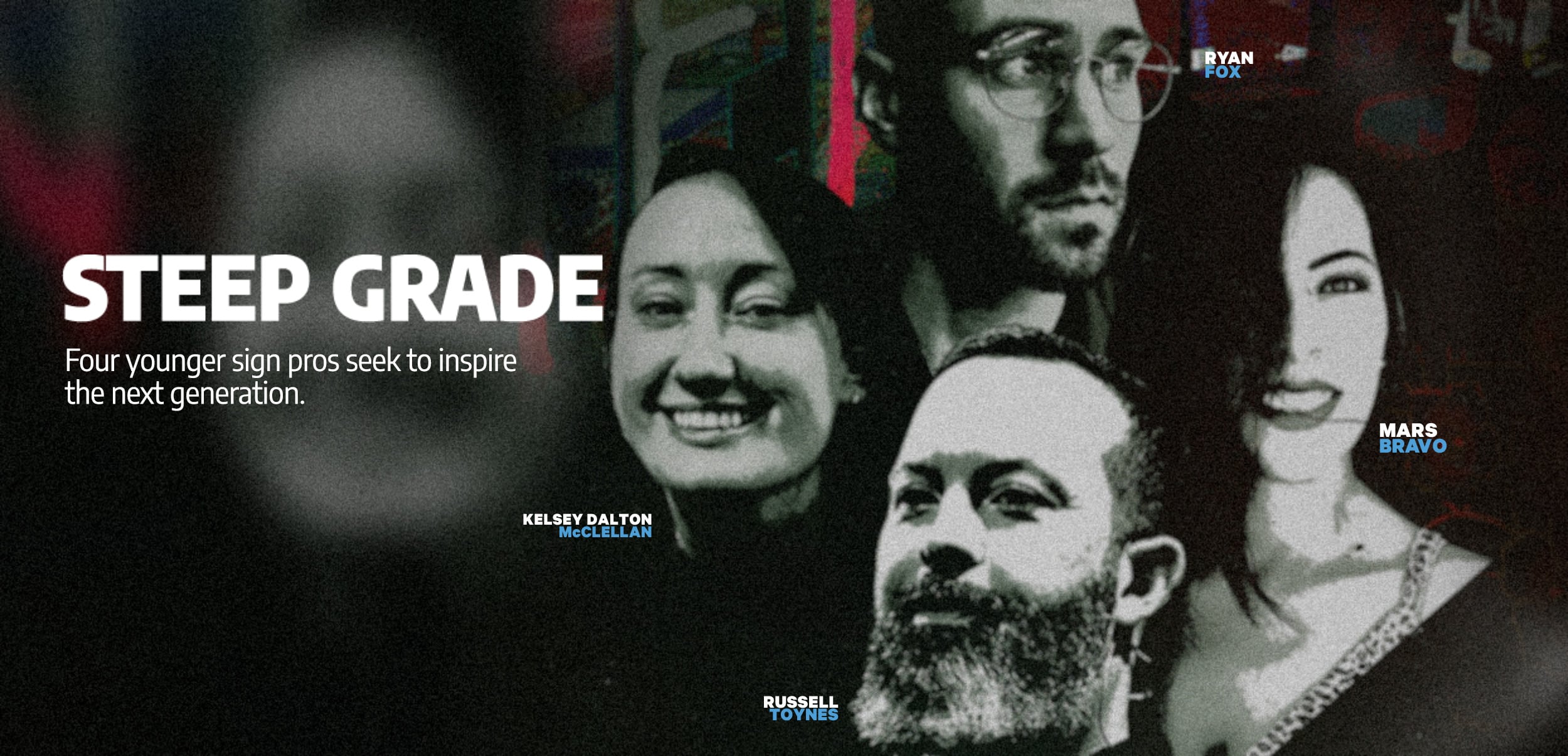
Four Younger Sign Pros Seek to Inspire the Next Generation
Each is passionate about passing along hard-earned knowledge and experience.
Published
3 months agoon
I RECENTLY RETURNED FROM a six-week stay in Portugal. I was surrounded by beautiful pastel-hued buildings, 14th-century churches, and endless hills around every corner. I developed ankle abs. Anyone selling, designing, fabricating or installing signs will say that the road to a career in the sign industry is similar to the ones in Porto or Lisbon: cobbled, narrow, winding and hilly.
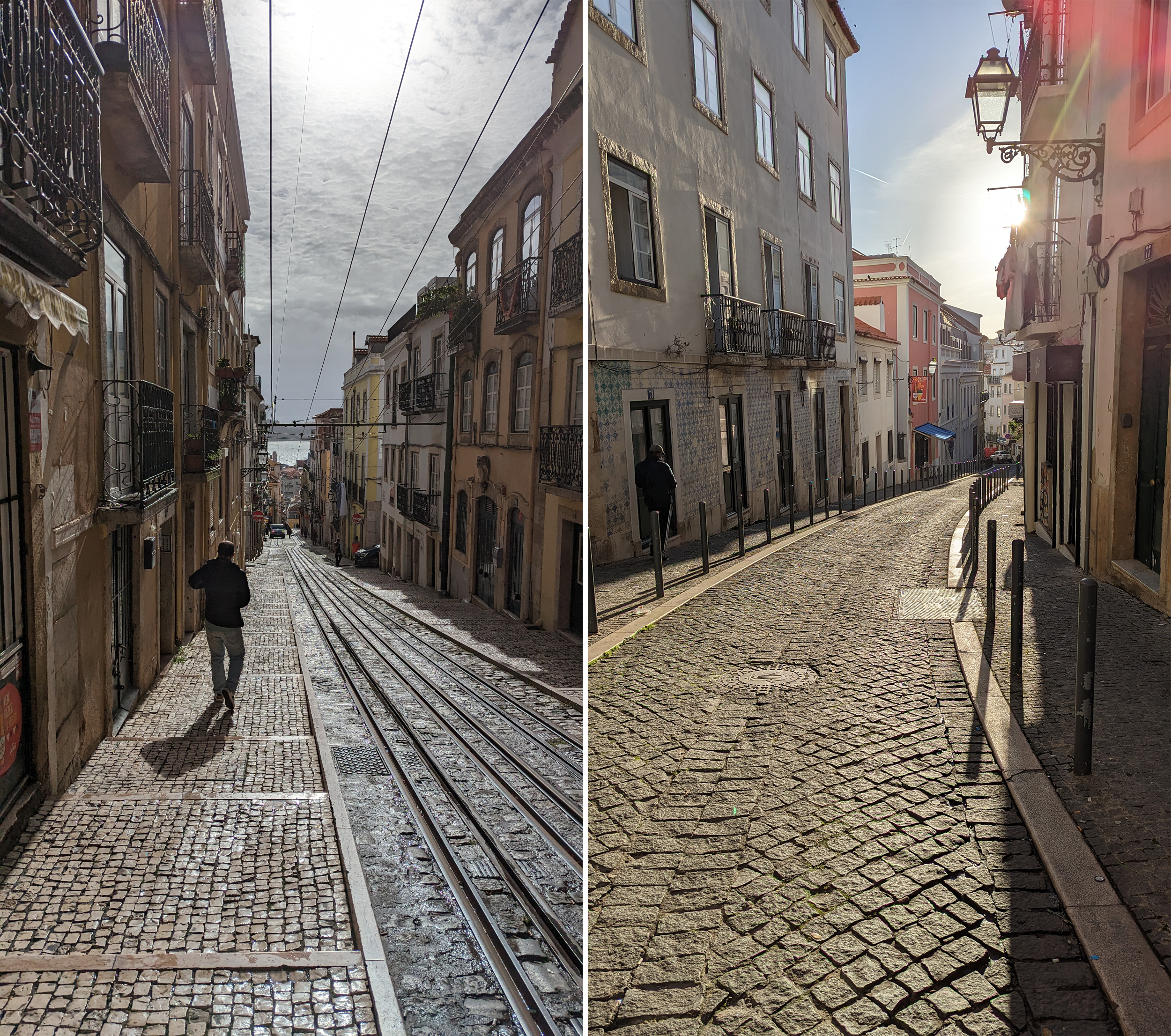
I had one goal when I started Studio Dzo (Austin, TX): to disrupt the sign industry by putting design front and center. Challenging and changing an entire industry does not come easy. It requires passion, commitment and a willingness to learn. At first we felt alone in our campaign but over the years we found other awesome sign folk who share our love for good work and great design. We met with our friends Mars Bravo of Signs from Mars (Los Angeles), Kelsey Dalton McClellan of Heart & Bone Signs (Chicago) and Ryan Fox from Fource Communications (Dallas), a marketing company. We asked them to share how they found themselves in the sign industry, what were some of the challenges they faced, and what they are doing to make working in signs better for the next generation.
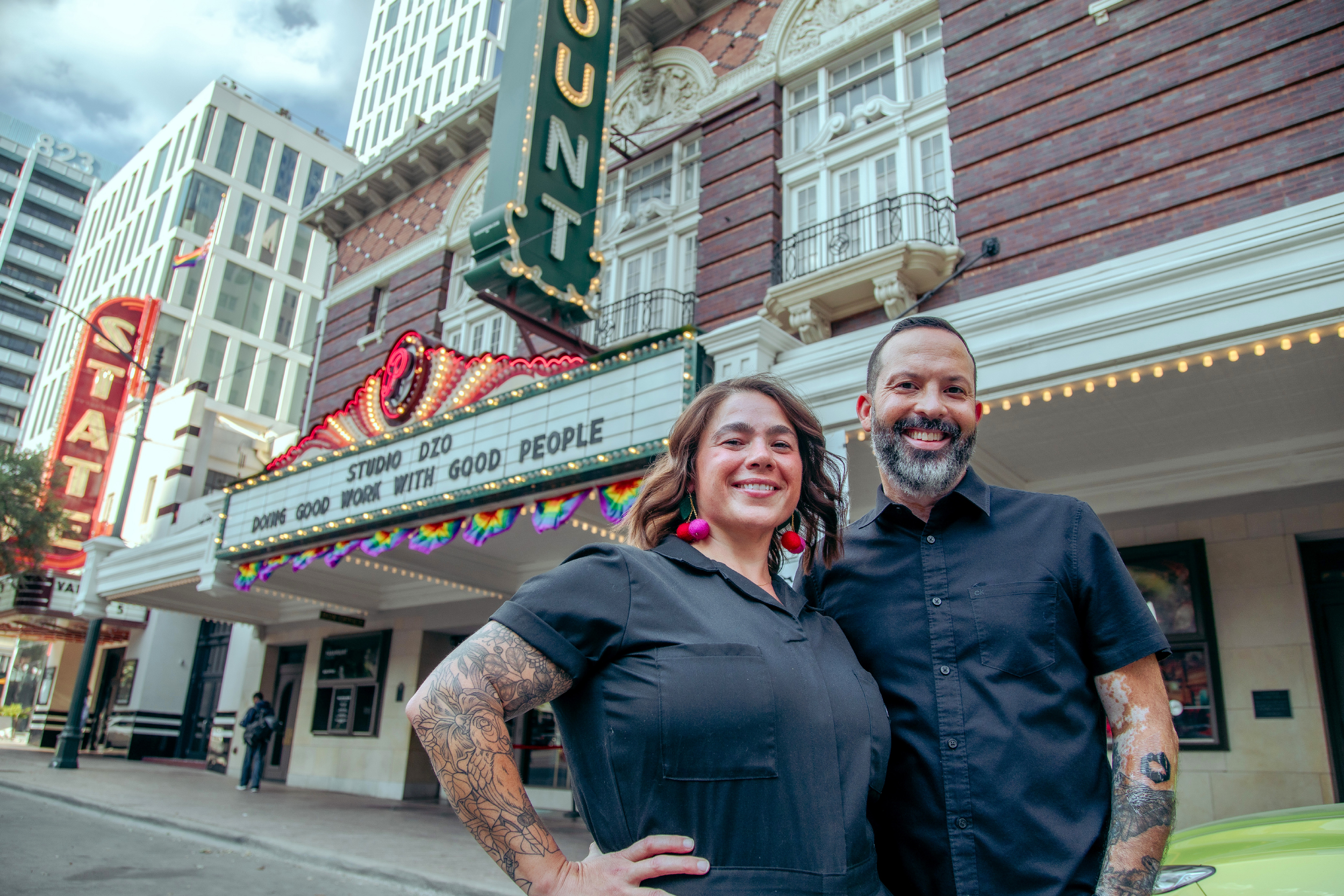 GOOD WORK: Elizabeth Arenella Toynes (left) and Russell’s company motto is “do good work.”
GOOD WORK: Elizabeth Arenella Toynes (left) and Russell’s company motto is “do good work.”
SIGNING UP
It’s fair to say that many, possibly most in the sign industry originally felt no calling to signs. Most of us can attribute our introduction to a friend or family member. I can attest. My father-in-law, Joe Arenella (Sign Guy Joe of SignTracker) got me hooked on signs. For Kelsey Dalton McClellan of Heart & Bone Signs, it was an international experience. “When I was a young girl, my grandfather brought me on a trip to Vietnam, and I fell in love with signpainting,” she says.
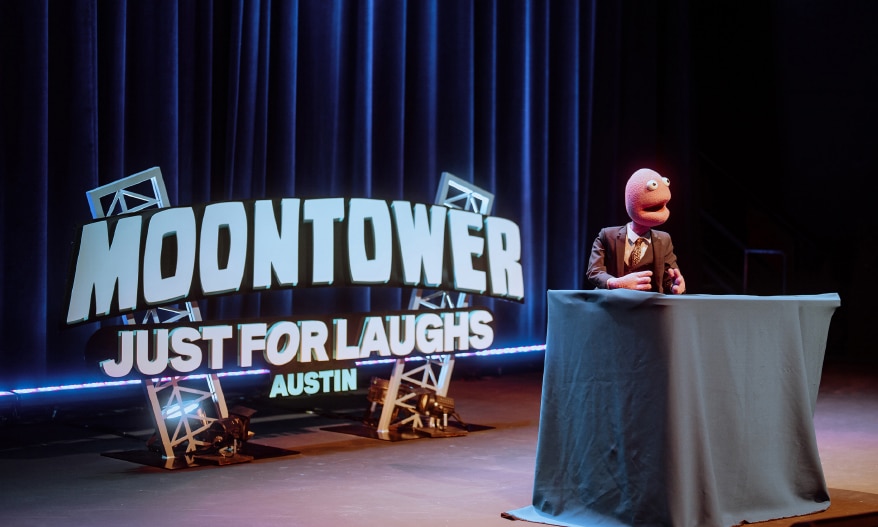
Ryan Fox, a designer at Fource Communications, also never expected to get caught up in signs. “I have a background in graphic design and fine arts, and came out of school doing straight web design and development. I never thought I’d get into signs. I barely even thought about them,” he says. “Going from traditional design into sign design expanded my mindset about design as a whole. I didn’t know I was going to love it nearly as much as I do.”
Personally, I can relate to Mars Bravo. For some of us burnout from years of the monotonous grind of corporate life had us seeking something, anything, to escape. “Coming from a graphic design job, I took a leap of faith and left a big corporation to pursue what I wanted to do,” she says. “And it wasn’t what I thought it would be at all. I ended up doing site surveying as my entryway into the sign industry, and let me tell you, I had no idea what I was doing at first. Driving around measuring buildings in harsh weather, not having the right tools, not knowing what to look for… it was rough. But, I applied myself, learned how to do it right, and now I’m kind of a self-proclaimed survey expert.”
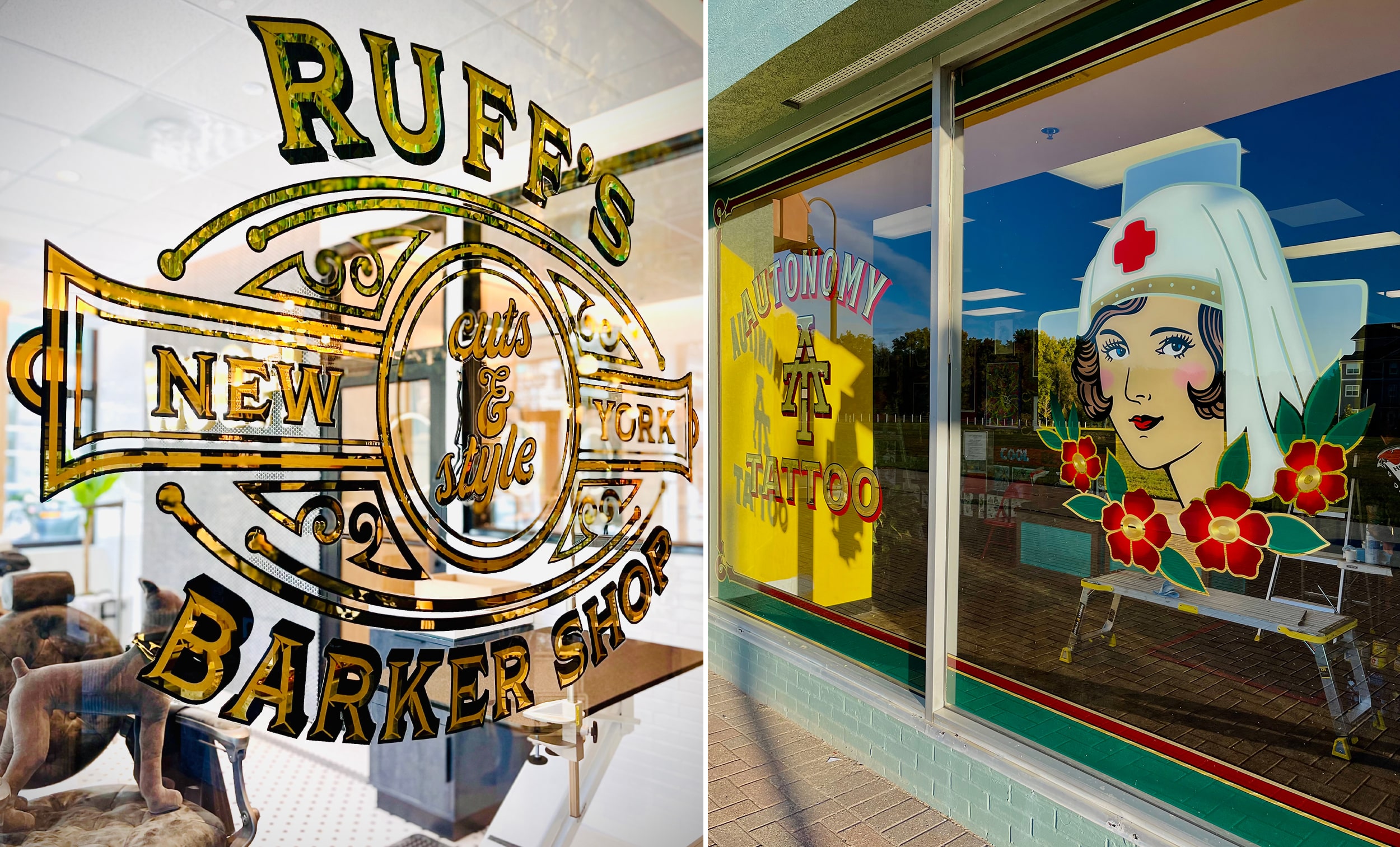 RARE GOLD: Goldleaf signs are rare and Kelsey Dalton McClellan is the rare sign pro with knowledge to create them.
RARE GOLD: Goldleaf signs are rare and Kelsey Dalton McClellan is the rare sign pro with knowledge to create them.
HARD KNOCKS
“Unfortunately, most business owners don’t think about the fact that they need a sign long after they should have already considered it.” — Kelsey Dalton McClellan
While many of us in the sign industry have degrees or some higher education, for the most part, it did not include signage. How one goes about learning all there is to know about designing, fabricating and installing signs isn’t shared with us in one nice and neat package. Like most sign designers, Ryan leveraged his design education but found that wasn’t enough. “I did a lot of learning on the job, but I credit my schooling and passion for design as to why I was able to deep dive into it so successfully,” he says. “At the end of the day, it’s all shapes and colors, with utility and real-world purpose.”
Embracing curiosity and failure was the best way for Mars to learn the ropes. “There isn’t traditional training you undergo when working in a signshop, so I really needed to be proactive about asking questions and not being afraid to mess up,” she says. “When it came to learning on the job, it was a series of trial and error — making mistakes, screwing up, learning from it and trying again the next day. Through this, I grew and evolved so much as a sign designer. I pushed myself to adapt and learn on the job because I knew it was the only way I’d get to where I wanted to be.”
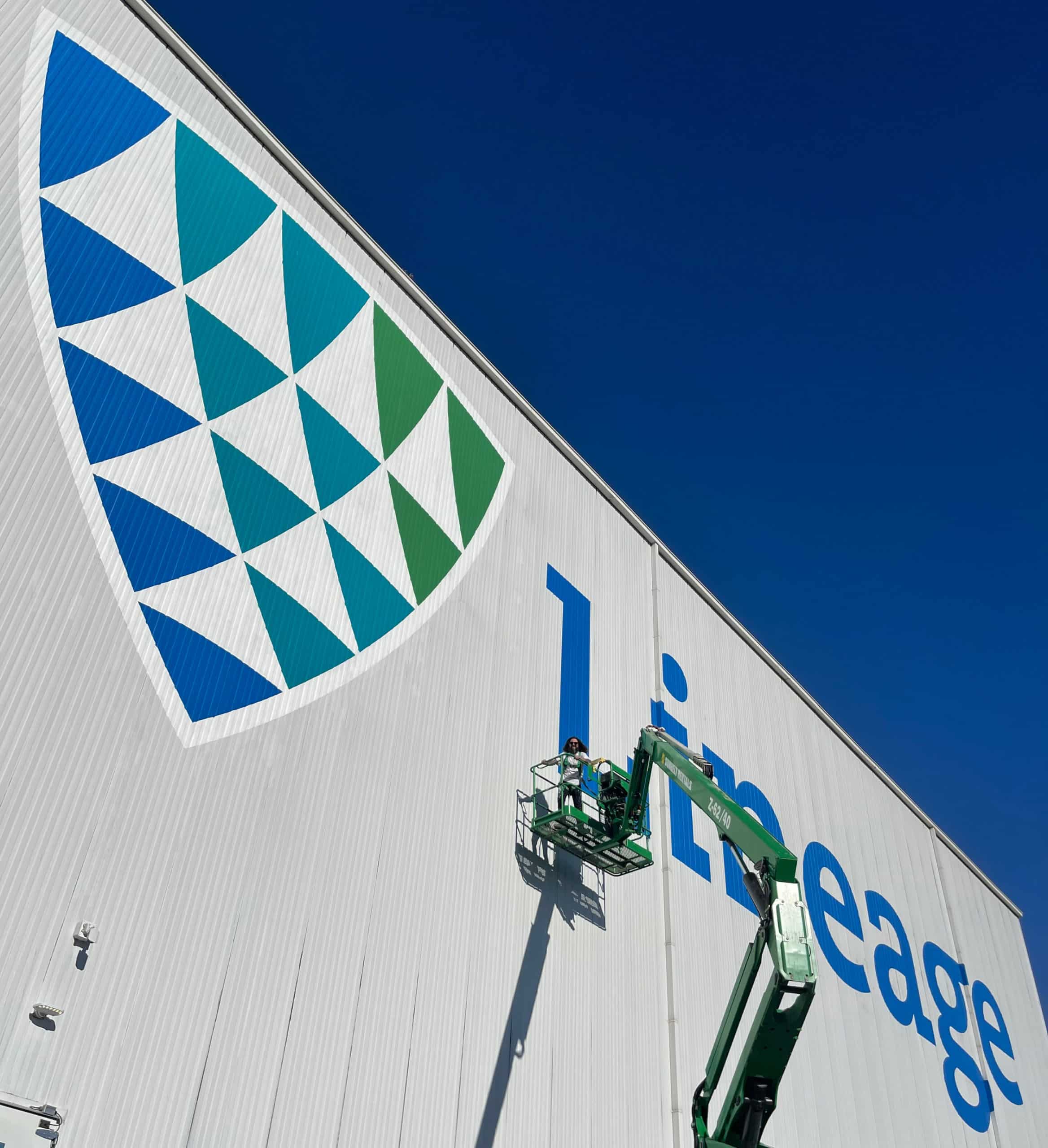
But what if your goal is to do your own thing? Kelsey found that there’s a wealth of knowledge that can be gained from those who have forged their own. “I didn’t learn about sign design in school, [so] through a ton of trial and error, and lots of mistakes, I paved the way for myself as a signpainter and learned the ropes on my own,” she says. “Being a signpainter is much different than a traditional fabricator or designer. I was lucky enough to find a mentor that helped me learn, which I highly recommend to others trying to get into the industry. Connecting with other people that are doing what you want to do, respectfully asking questions and getting to know them as people to develop long term relationships can really pay off. Be open to learning from different types of people, and don’t close yourself off from new experiences. Don’t be scared of saying ‘yes’ to things. Grab a beer with someone. Cultivate relationships. It will lead to great things.”
Advertisement 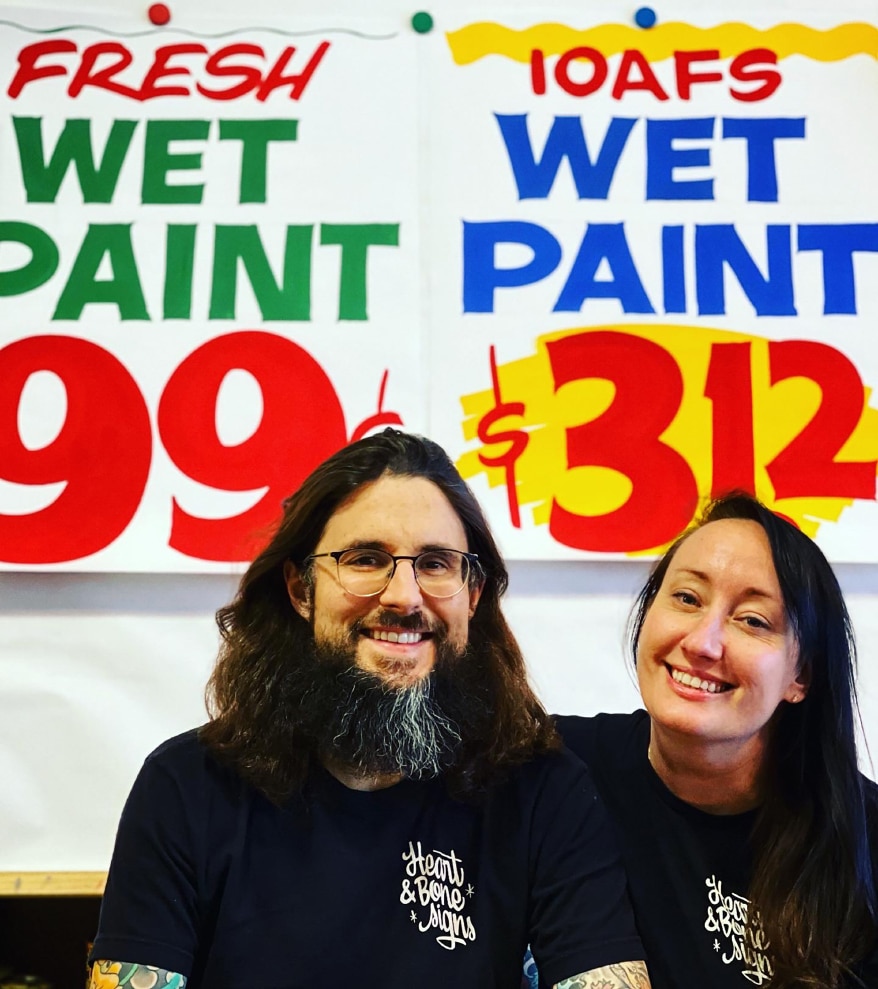 PARTNER IN SIGNS: Andrew McClellan (left) and Kelsey educate the public about their craft.
PARTNER IN SIGNS: Andrew McClellan (left) and Kelsey educate the public about their craft.
INFO-SHARE
Whether you’re a neon bender, signpainter or ADA expert, we all learned a lot from just doing, and even more from experts willing to share their secrets. Keeping information close to the chest can seem like a good strategy for job security but it will quickly leave a business and even an entire industry siloed, fractured and ultimately obsolete. Sharing knowledge is critical to the longevity of any trade. As a design educator, I bring real sign projects to the classroom to teach that the “why” we bring to sign design is much more important than the “how.” I challenge my students to consider the space and environment when designing a brand identity and to look at how effective signage goes unnoticed.
Our industry can only get better through learning and teaching. Mars is doing her part by giving the next generation of signmakers and even the general public the information never offered to her. “I think it’s more important for us signmakers to want people outside the industry to know about it,” she says. “I’ve encountered so much gatekeeping of information within my time working in the industry, and signmakers often think they don’t need to (or don’t want to) spend the time educating others about signage. We can add so much value to our industry to the average person by just taking the time to help them understand, especially clients.”
For Kelsey, client education is just as important. “We work with goldleaf and a lot of people think it’s just paint, and don’t understand we work with actual gold. Educating people about the kind of sign-age I do is important because it’s truly an artform that can also communicate branding for a business,” she says. “Most owners don’t know a lot about signs, and being more educated about budget, the ins and outs of signs, etc., would really help set them up for success — especially when opening a new store or business for the first time. Unfortunately, most business owners don’t think about the fact that they need a sign long after they should have already considered it.”
Some of us consider signmakers the original UX (User Experience) designers and Ryan agrees that how signs work to help all of us is the most important goal of sign design. “Wayfinding and ADA signage hold a lot of value that I think is often overlooked,” he says. “I think it is massively important for people to be educated about these areas of sign-age because it’s right in front of us literally all the time. Usually, people don’t even notice. What matters is that wayfinding signage is designed so well that people don’t even have to take the time to stop, stare at a sign, think about where they need to go, and then just stand there confused as to where to go next. It’s important for people to feel the space they’re in is working for them, and not like they are working to understand it, so it’s up to us as sign designers to further that goal.”
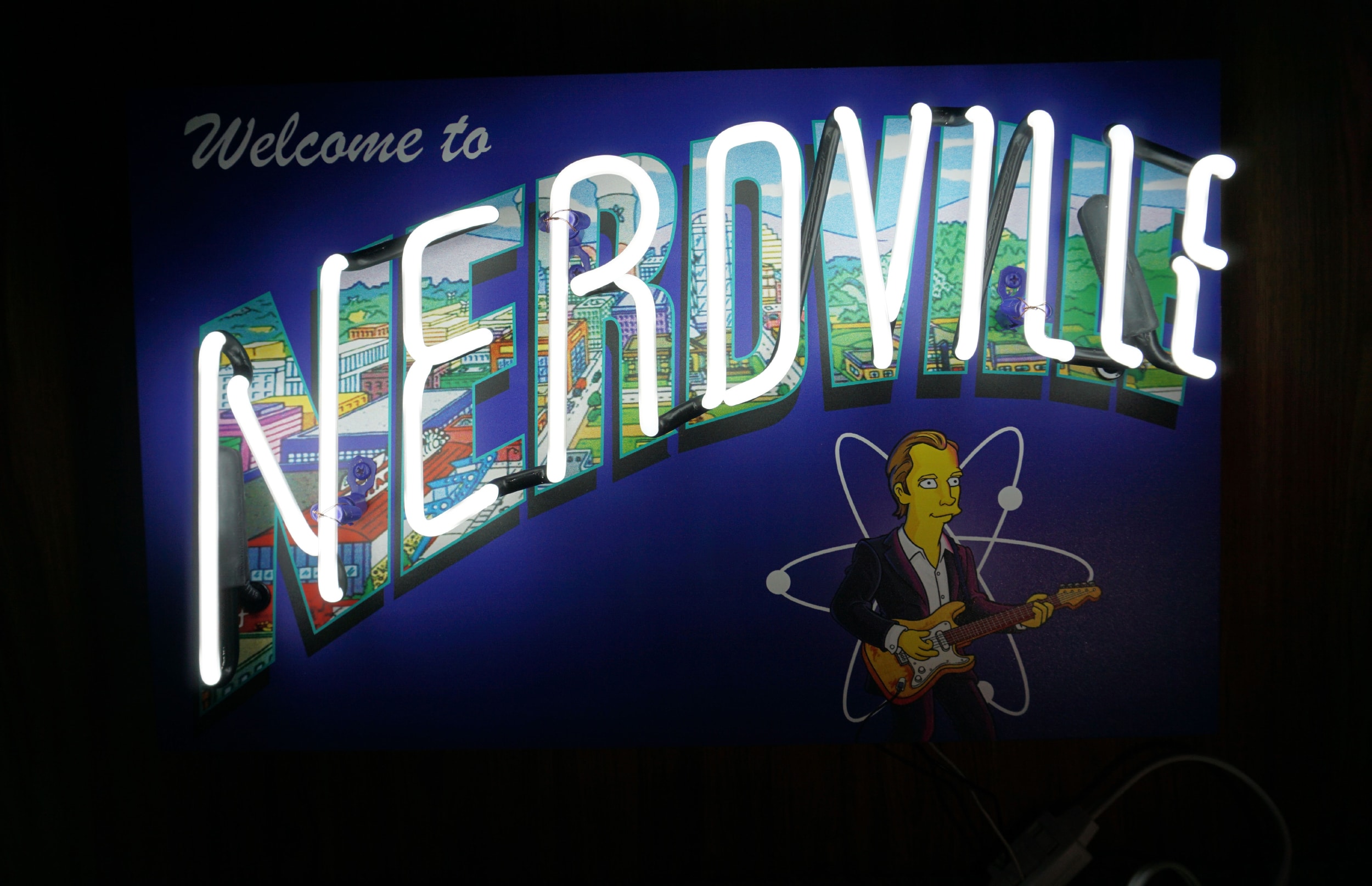 INSTA-SHARE: Ryan learns from projects he sees on social media, and shares his for others’ edification.
INSTA-SHARE: Ryan learns from projects he sees on social media, and shares his for others’ edification.
SOCIAL STUDIES
“ I think it’s more important for us signmakers to want people outside the industry to know about it.” — Mars Bravo
So, where can someone already in the sign industry go to learn more? Mars is working on bridging that gap with her first book. “It covers the basics of signage, from a perspective of someone who kind of just fell into the industry,” she says. As busy as we all are, making time to learn is essential to staying relevant in an ever-evolving industry.
One education channel to consider is social media. Facebook and Instagram can offer much more than unsolicited political opinions and ads. You just have to know whom to follow. At Studio Dzo we started “Sign School Saturdays” to teach non-sign folks sign terminology, materials and various fabrication techniques.
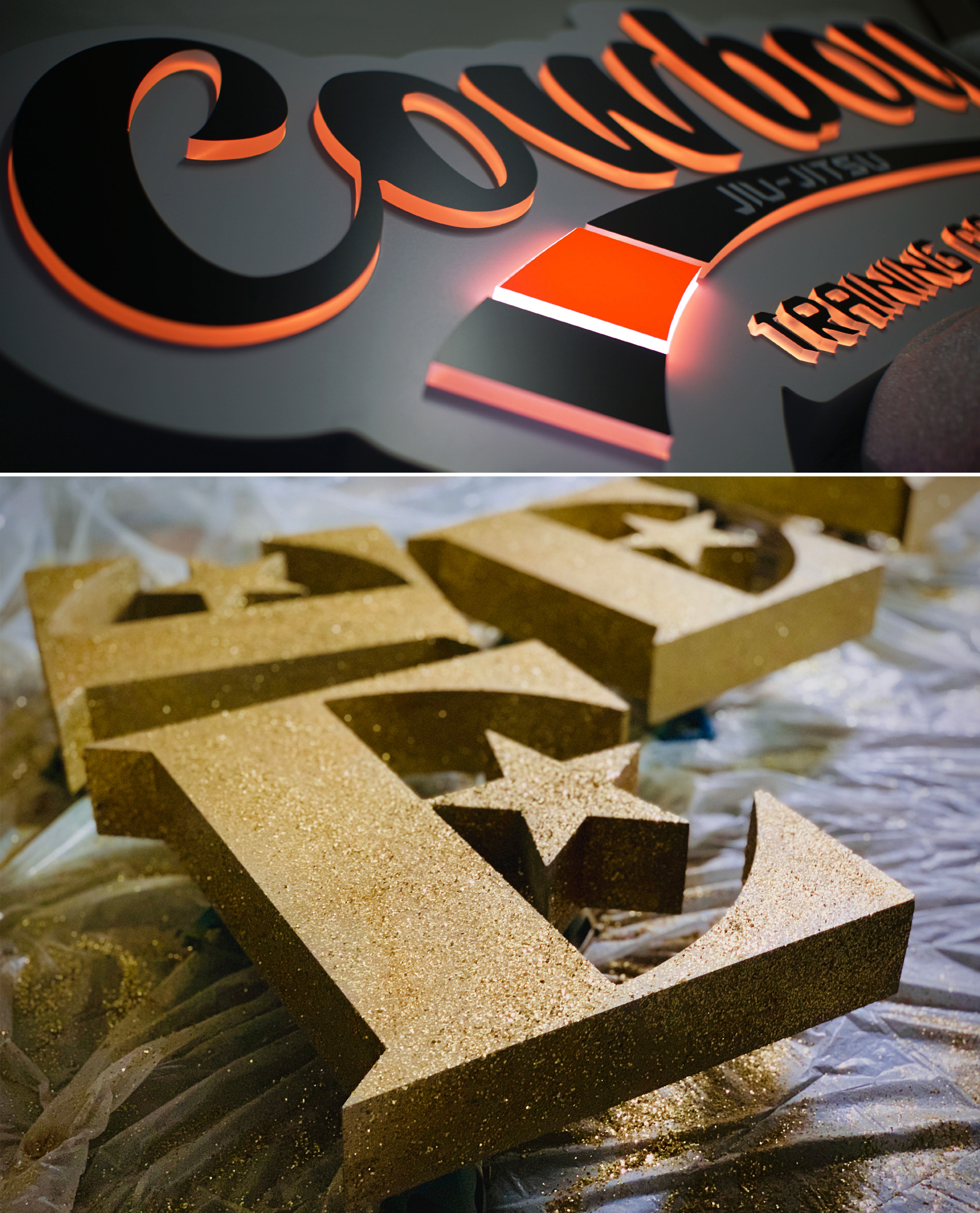
You should follow Mars on instagram @signsfrommars to learn more about the behind the scenes of signs. “Recently, I’ve been working on more survey-how-to posts,” she says. “I also like to take photos of vintage signage and write up mini-history lessons about them, with cool stories that aren’t being told enough. I look up facts about how the sign was made and the challenges that come with it. I find it super interesting and I think others do, too.”
Ryan follows and interacts with a lot of folks in the sign community through social media. “I like to showcase my work on Instagram when it’s a niche, more unique design that I have a tidbit about to share, or just want to nerd out about a sign I made,” he says. “I like to push the marrying of style and function together when it comes to my work, and I think that comes across clearly in my posts.” You can follow Ryan on instagram @graphicdesignryan. “I’m also a practicing photographer which really helps with taking effective photos for my feed,” he adds. “Showing off the process is super fun as well and I feel like people always gain the most from seeing that.”
Advertisement 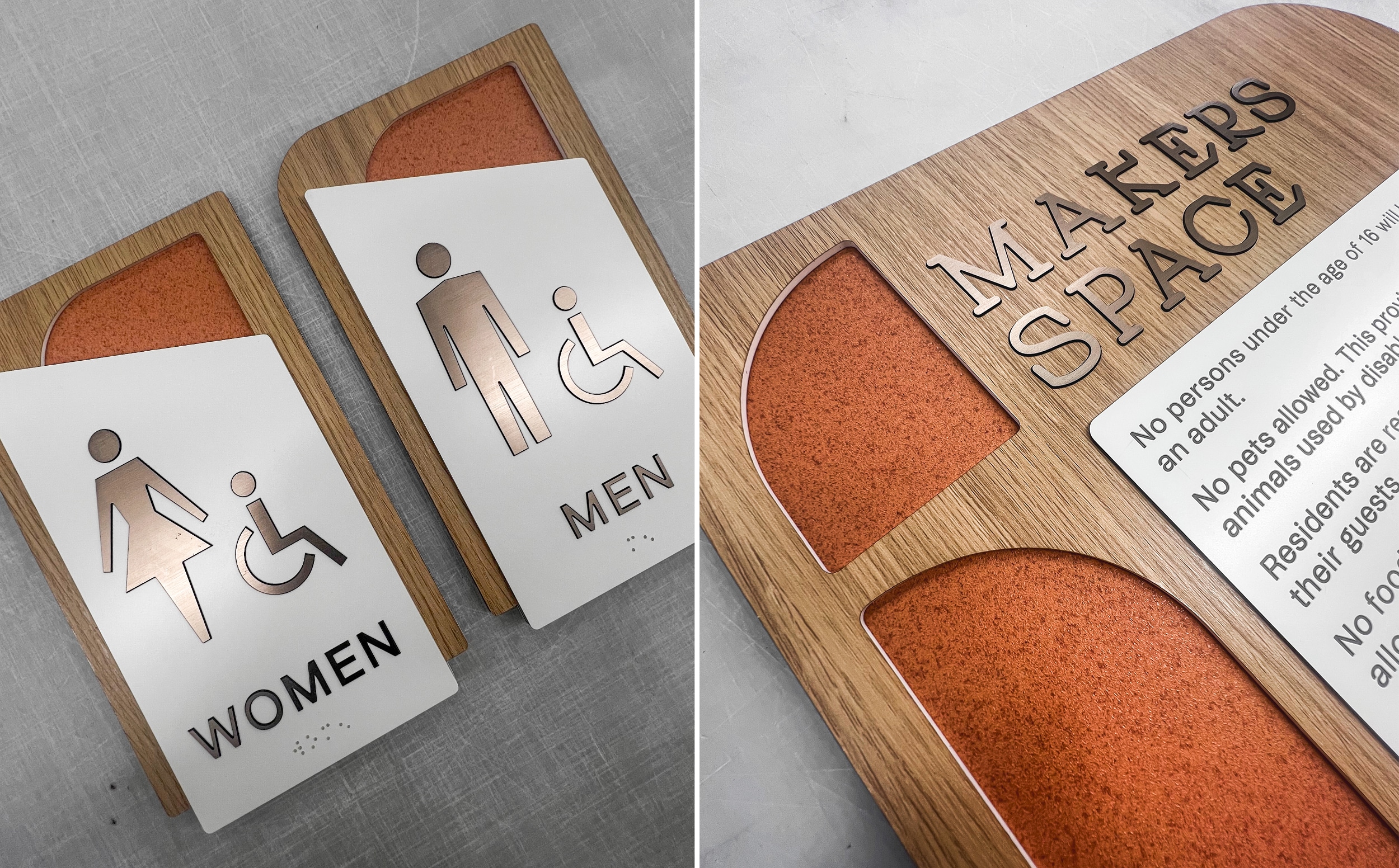 STYLE AND FUNCTION: There’s no reason that even ADA signs can’t be designed to be attractive.
STYLE AND FUNCTION: There’s no reason that even ADA signs can’t be designed to be attractive.
NEED TO WORKSHOP
“I never thought I’d get into signs. I barely even thought about them. Going from traditional design into sign design expanded my mindset about design as a whole.” — Ryan Fox
While books and social media can be great tools for expanding knowledge and skills, they just can’t deliver the same value that in-person classes and workshops do. Kelsey and Andrew McClellan, her husband and fellow co-owner of Heart & Bone, know that getting your hands dirty is how you truly learn the craft of handpainted signs. “I hold workshops for goldleaf painting and am also occasionally invited to different events to give workshops there. These are typically for new designers that are interested in signpainting and want to learn the ropes of goldleaf work,” Kelsey says. “We love showing off our process work on social media and have gained a lot of connections from that. Sharing knowledge is really important to me because there is always someone out there that could have the skill in them and not even know about it yet. Helping people discover that within themselves is an amazing thing.”
Similar to Kelsey, Mars loves this industry and wants to do all that she can to help shepherd the next generation. “I know there is a little Mars out there that doesn’t know she’s going to also jump into this industry, and I want to help clear the way for that path,” she says. “I am aiming to have my first vinyl workshop next year, hosted by me and open to designers curious about signs. I thought starting with vinyl would be a somewhat simple entryway into learning about signs.”
For Mars, Ryan, Kelsey and myself, signs are much more than a job that pays the bills. We risk our lives staring at signs on the highway, bump into people on the sidewalk as we ponder how cool blade signs were built, and take more pictures of signs than our families when we are on vacation. When you love something, it doesn’t feel like work.
“Saudade” is the Portuguese word for the feeling of longing, melancholy, desire and nostalgia. As I sit at my desk in Austin, I am more familiar with it than I would like to be. At the risk of being dramatically cliché, the future of the sign industry is on you, me and all of us in the sign game. If you learned to bend neon, lay vinyl, flame-polish acrylic, install channel letters or design ADA packages, it was because someone cared enough to take the time to show you. Now it’s your turn, before the things we love about signs fade, leaving us all feeling saudade.
Connect, follow, and share with us how you’re designing the future of signs.
Russell Toynes
Studio Dzo | studiodzo.com
Instagram: @studiodzo
Facebook: facebook.com/studiodzo
Mars Bravo
Signs From Mars | signsfrommars.com
Instagram: @signsfrommars
Facebook: facebook.com/signfrommars
Kelsey Dalton McClellan
Heart & Bone Signs | chicagosignpainters.com
Instagram: @heartandbonesigns
Facebook: facebook.com/heartandbonesigns
Ryan Fox
fource communicatons | fource.net
Instagram: @graphicdesignryan
PHOTO GALLERY (23 IMAGES)
Advertisement
Owner & Creative Director at Studio Dzo

SPONSORED VIDEO
Introducing the Sign Industry Podcast
The Sign Industry Podcast is a platform for every sign person out there — from the old-timers who bent neon and hand-lettered boats to those venturing into new technologies — we want to get their stories out for everyone to hear. Come join us and listen to stories, learn tricks or techniques, and get insights of what’s to come. We are the world’s second oldest profession. The folks who started the world’s oldest profession needed a sign.
You may like

NUtec Digital Ink Invests in Solar Energy for Facility

5 Reasons to Sell a Sign Company Plus 6 Options

21 Larry Albright Plasma Globes, Crackle Tubes and More
Subscribe

Bulletins
Get the most important news and business ideas from Signs of the Times magazine's news bulletin.
Most Popular
-

 Tip Sheet2 weeks ago
Tip Sheet2 weeks agoAlways Brand Yourself and Wear Fewer Hats — Two of April’s Sign Tips
-

 Photo Gallery4 days ago
Photo Gallery4 days ago30 Snapshots of the 2024 ISA Sign Expo
-

 Ask Signs of the Times6 days ago
Ask Signs of the Times6 days agoWhy Are Signs from Canva so Overloaded and Similar?
-

 Real Deal2 weeks ago
Real Deal2 weeks agoA Woman Sign Company Owner Confronts a Sexist Wholesaler
-

 Paula Fargo1 day ago
Paula Fargo1 day ago5 Reasons to Sell a Sign Company Plus 6 Options
-

 Benchmarks1 week ago
Benchmarks1 week ago6 Sports Venue Signs Deserving a Standing Ovation
-

 Photo Gallery1 day ago
Photo Gallery1 day ago21 Larry Albright Plasma Globes, Crackle Tubes and More
-

 Women in Signs2 weeks ago
Women in Signs2 weeks ago2024 Women in Signs: Megan Bradley
